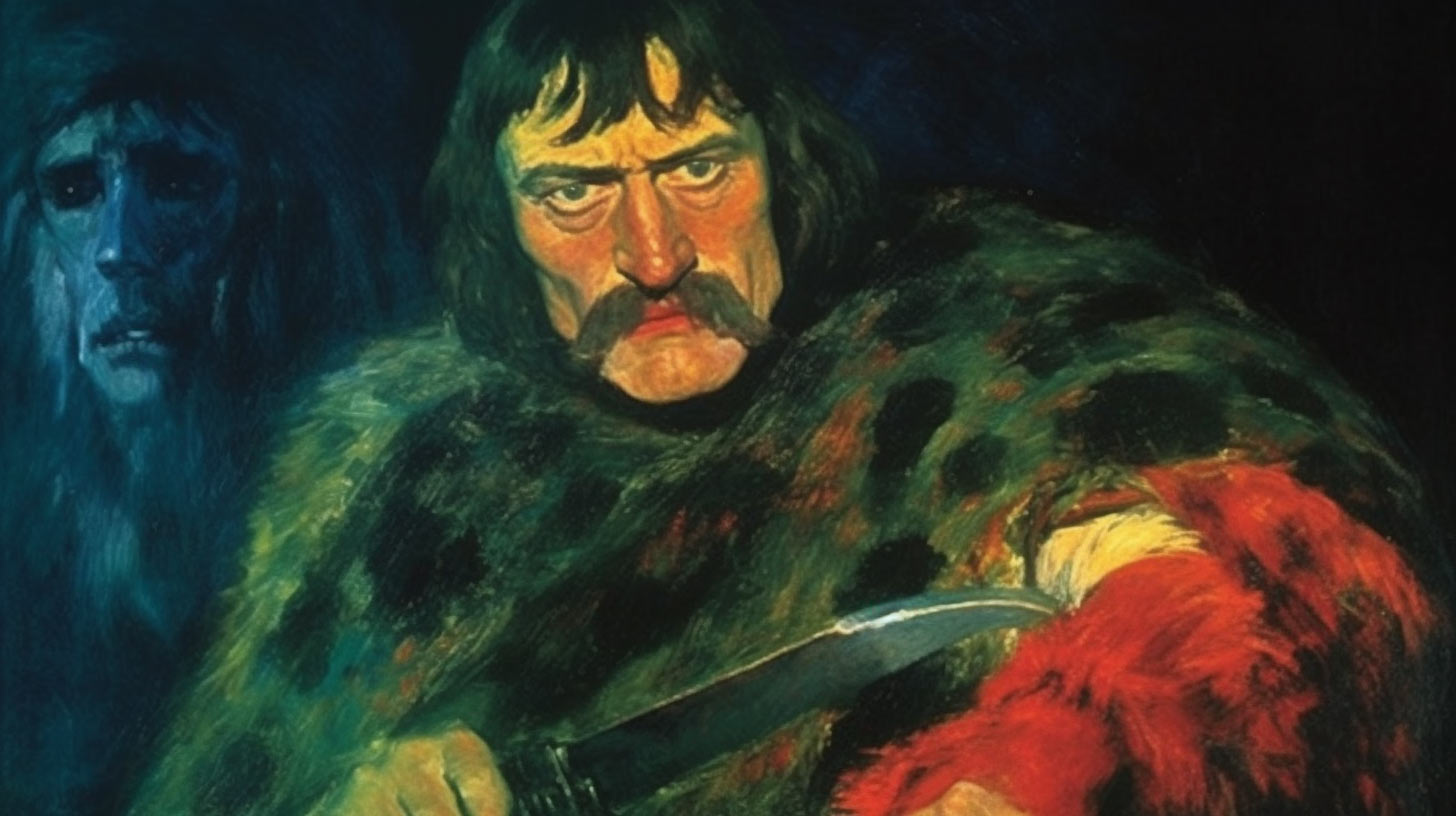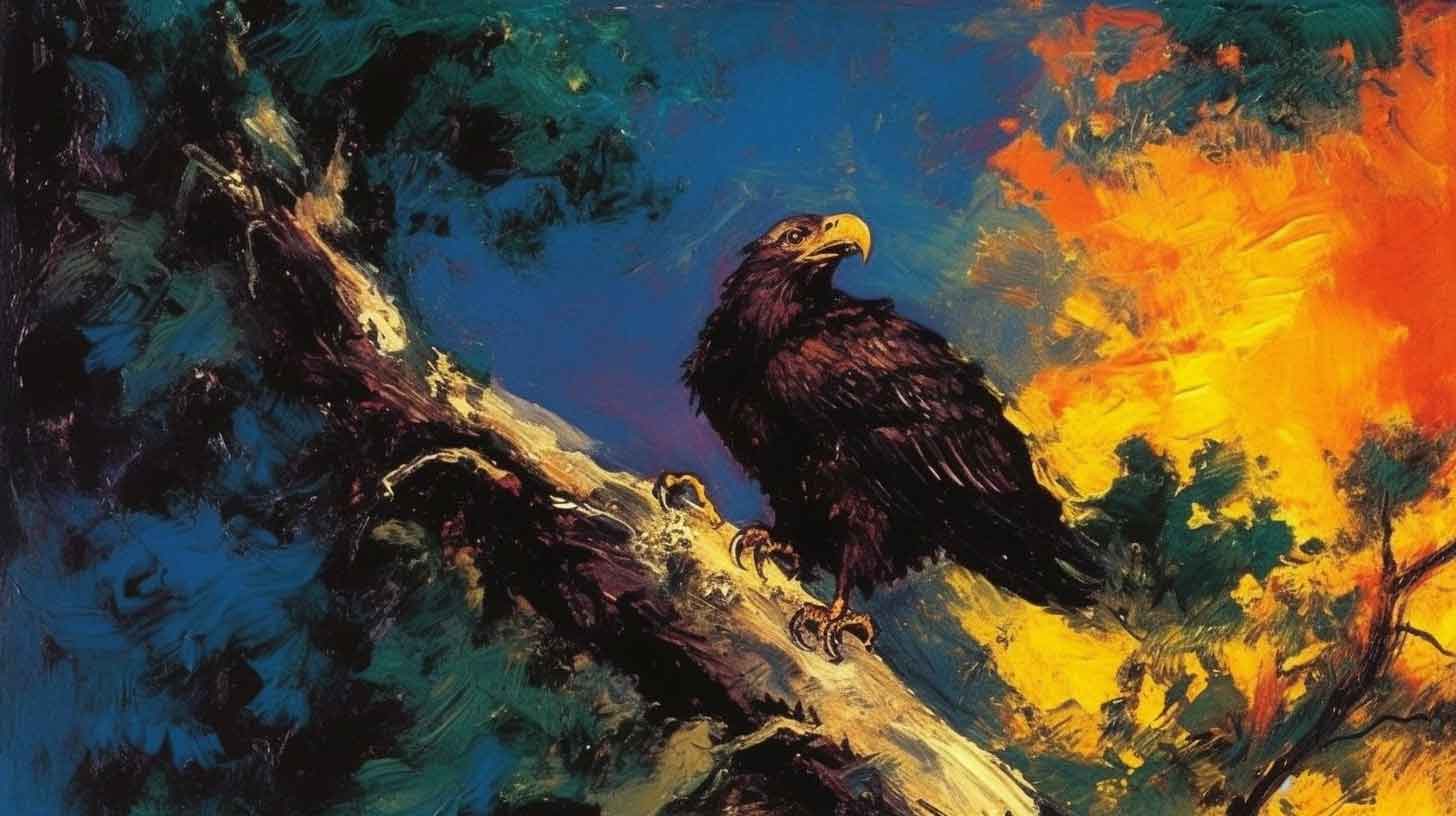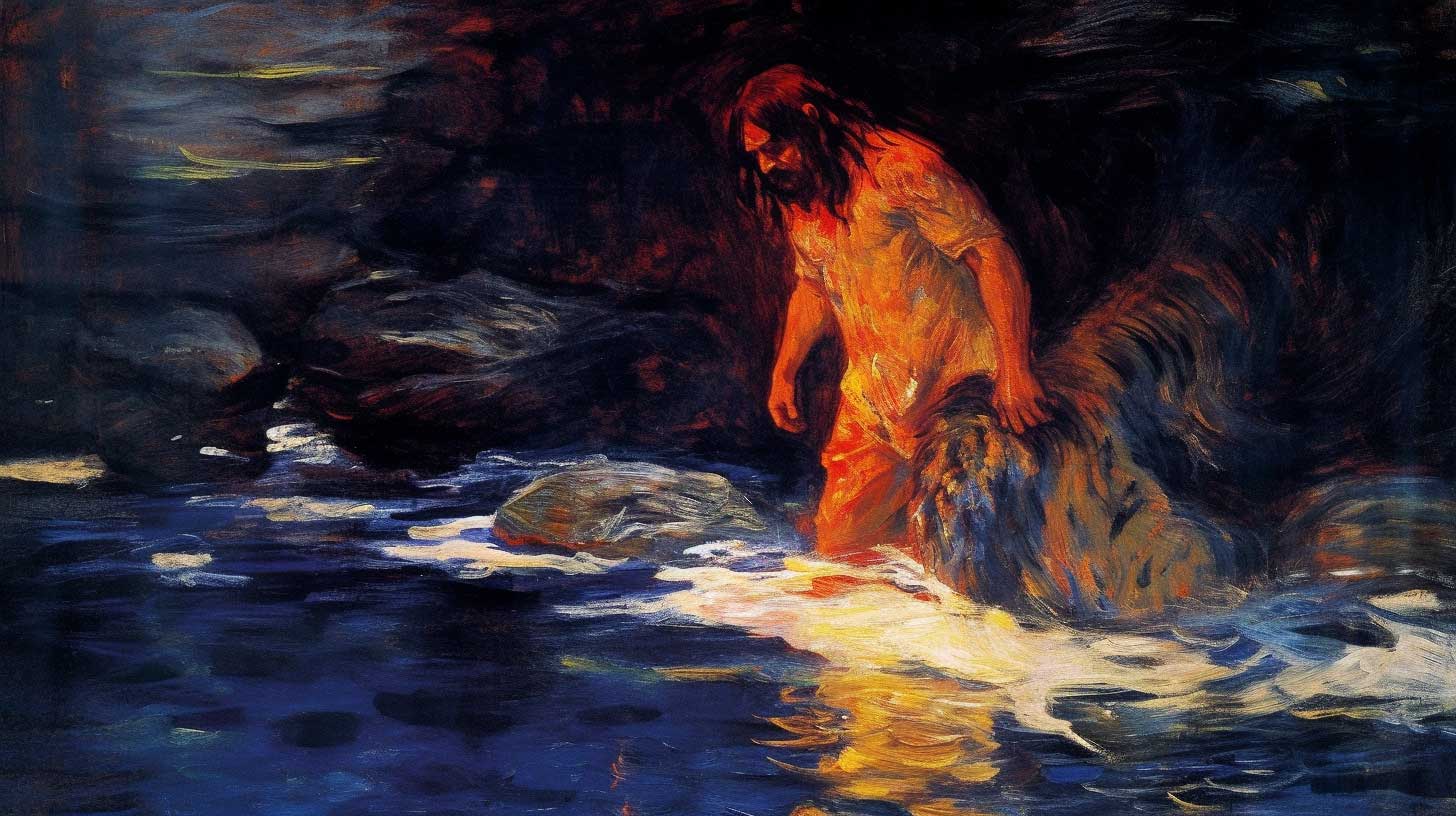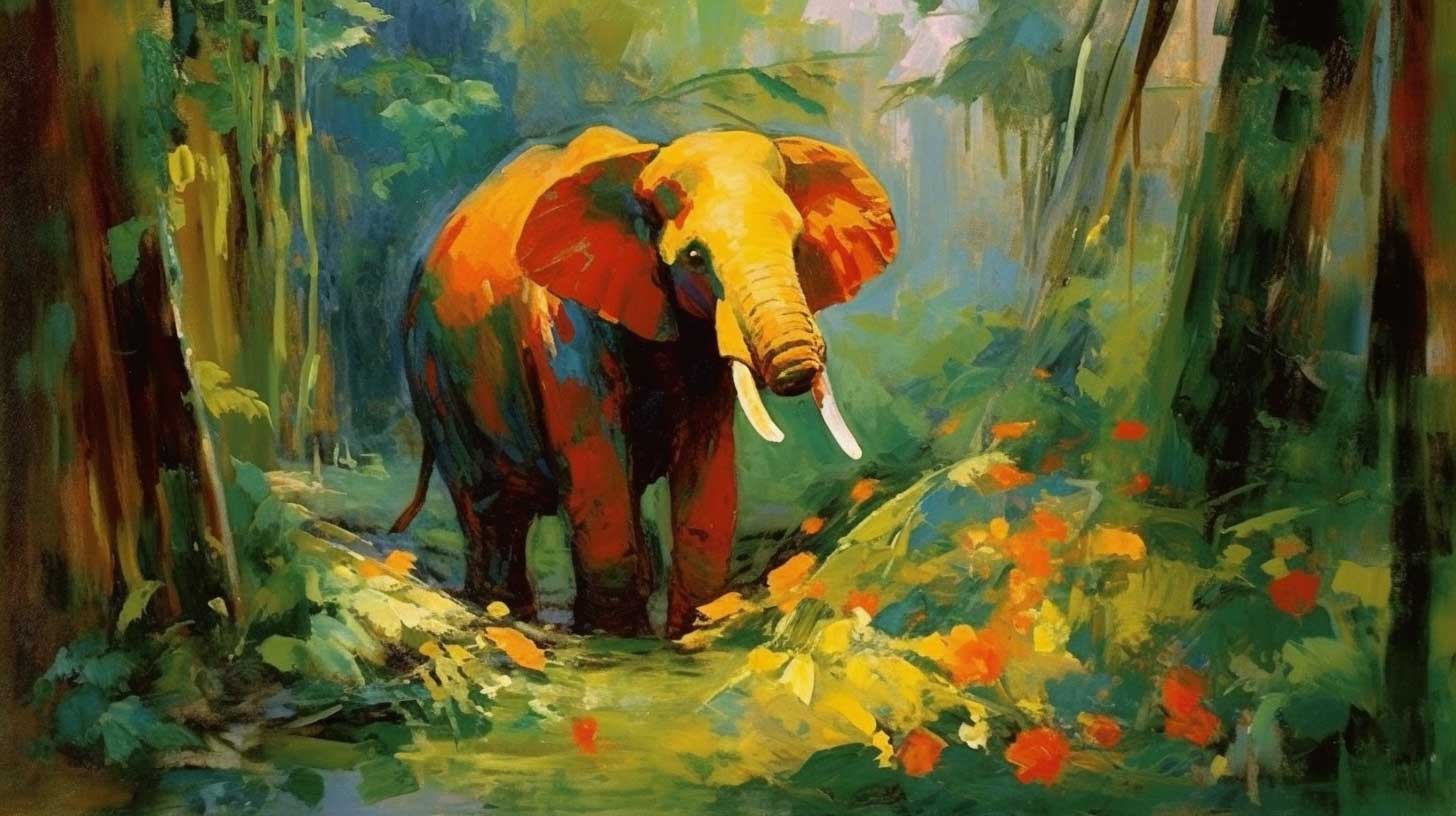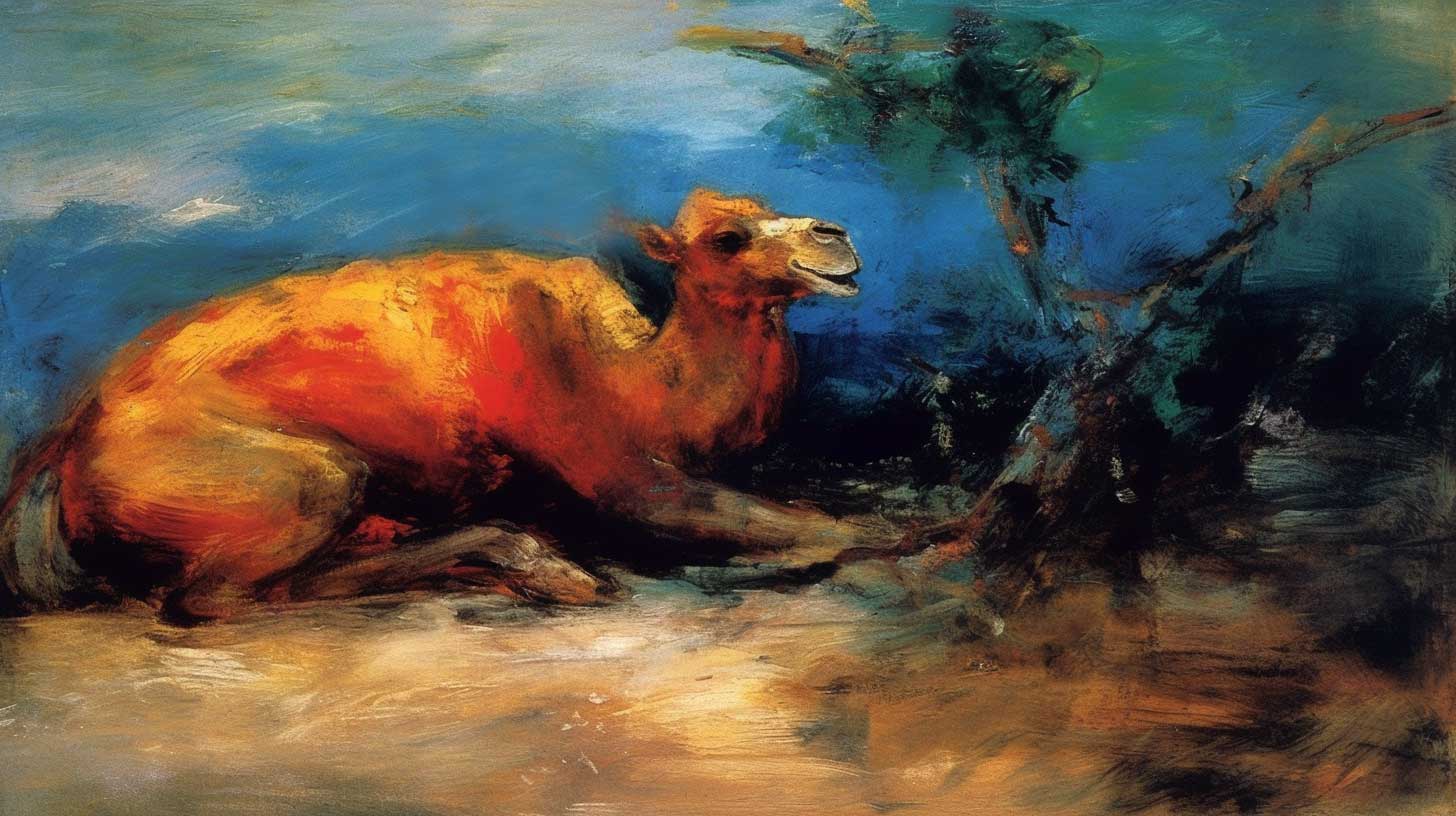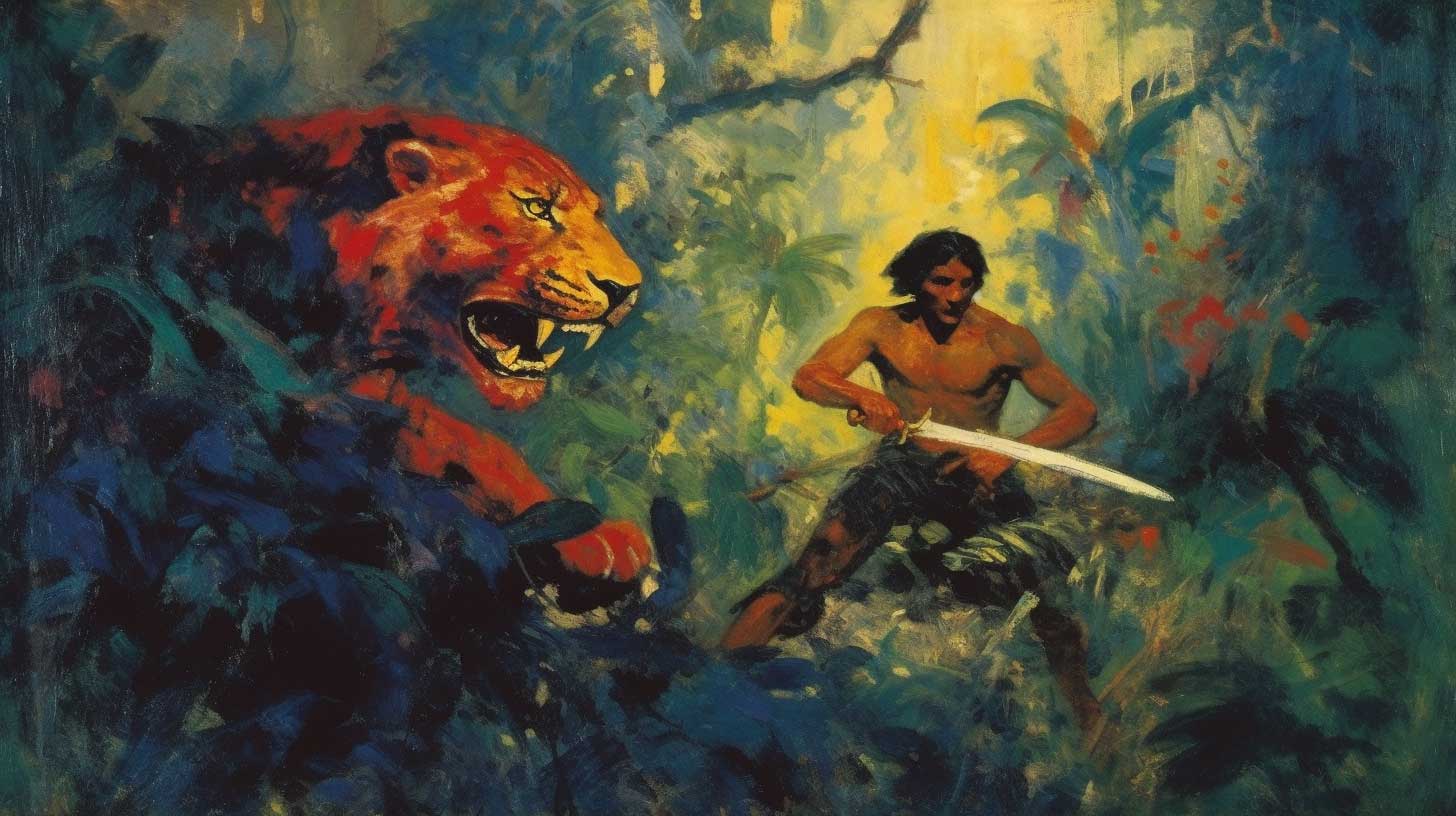Posts by Juan Artola Miranda
The Ant and the Grasshopper (Aesop’s Fables)
The Ant & the Grasshopper is one of Aesop’s most enduring fables. It’s about working hard and setting aside savings, but the moral lesson is controversial. You’ll see why. I’ll explain it at the end.
The version we know today is a combination of two slightly different fables: The Ant and the Dung Beetle and The Ant and the Cricket. Since they’re almost the same, I’ve combined them.
As is tradition, this is a retelling in my own words.
The Fable
A long time ago, a grasshopper was hopping about, chirping and singing. An ant passed by, carrying an ear of corn to his nest.
The grasshopper thought the ant was a wretched thing, labouring away in the heat, never taking a moment’s rest. We only have so much time alive. What a miserable way to spend it.
“Why not come and dance with me,” asked the grasshopper, “instead of toiling your days away?”
“I am collecting food for the winter,” said the ant, “and I recommend you do the same.”
“Why bother about winter?” said the grasshopper; “It is summer, and we have plenty of food.” But the ant went on its way, continuing his work.
When winter came, the ground was covered with snow. The grasshopper was hungry, and there was no food to be found. So he went to the ant and asked, “What shall I do? I have no food!”
The ant replied, “You spent the summer frolicking about without a thought for the future, while I toiled to store up this food. You sang and danced while I worked. I’m afraid you’ll have to go hungry.”
The Moral
The moral of The Ant and the Grasshopper is that we ought to work instead of indulging in foolish pastimes. Said another way, we shouldn’t neglect tasks that will become important in the future.
This moral lesson is controversial. It seems perfectly sensible at first glance, but the ant’s greed and lack of compassion also makes it somewhat like the billionaire or public corporation that relentlessly accumulates needless amounts of wealth while others starve. Or you could say that the ant represents a work culture of slaving our days away, with never a moment for joy or relaxation, in a world where the costs of living are constantly inflating.
It can also seem insensitive and out of touch. “Poor?” asks the smart, healthy, competent, and well-educated millionaire. “Well then you should have worked harder.”
Lest this seem like a condemnation of capitalism, you could argue against the ant from a capitalist perspective, too. Imagine someone slaves all their days away, setting aside their savings, and then someone with more power (such as the government) comes along and redistributes their wealth. That’s what happened to my grandmother during the communist revolution in Cuba.
So, as you can imagine, there are fables rebutting this one:
- In Zeus and the Ant, recorded by the 19th-century French fabulist Émile Chambry, a farmer becomes obsessed with accumulating wealth, doing everything he can to gain as much as possible. Zeus punishes him by turning him into an ant, but he continues.
- In The Ants and the Pigs, by the medieval Christian monk Odo of Cheriton, a pig comes along to eat all the grains the ant has collected, leaving the ant to starve.
- In Solomon’s Ghost, by the German fabulist Gotthold Ephraim Lessing, a farmer takes inspiration from the ant and works hard all his life. When he is old, a ghost comes to him, reminding him that the ant rested during the winter. The farmer has enough. He doesn’t need to keep accumulating more.
- In A Tale of Two Orangs, a modern Mexican fable, one orang spends his days trying to gain power while the other collects resources. When famine comes, the powerful orang takes the resources of the wealthy one.
I love this, by the way. I love how there are fables written thousands of years apart, in different languages, on different continents, forever arguing with each other.
Similar Fables
If you like these controversial fables, there are a few more that come to mind. The first is The Donkey and the Onager, a set of two fables about freedom, one arguing for it, the other against. There’s also The Mongoose and the Farmer’s Wife which argues against older fables like The Wolf and the Lamb.
Or, for something rather different, you could try The Eagle and the Fox.
A Tale of Two Orangs (Mexican Fable)
A Tale of Two Orangs is a fable I wrote after reading The Ant and the Grasshopper by Aesop. It tells us we should prepare for the worst, and there’s wisdom in that, to be sure. But how could a small ant refuse the demands of a large grasshopper? I had to write a rejoinder.

A long time ago, when the jungles were lush and green, there were two orangs, Boriol and Fariol. They roamed the land together, hunting for fruits and nuts, diving for crayfish and oysters, and gathering herbs and spices. They shared their spoils equally, but they had different habits when it came to eating.
Boriol had an eager appetite, gobbling up his entire share of food as soon as he got it, filling his face and swelling his belly. Fariol was prudent and temperate, eating only enough to satisfy his hunger, saving the rest in a secret stash.
Alas, a terrible drought struck the land. The rivers dried up, the plants withered, and the animals fled or died. Food became scarce and precious. Boriol, who had saved nothing, found himself with nothing to eat.
Fariol fancied himself fortunate, for he had amassed a rich hoard of nuts and seeds and jerky. That is, until Boriol knocked at his door, demanding a share of the food. Boriol was a large and fearsome man. Fariol had little choice but to comply with his demands, giving away half of what he had.
The drought lasted for a long time. When the rain came again, Boriol was much thinner than before, having survived for months on just his body fat. With great regret, he buried Fariol’s bones beneath the palapa they used to sit under together.
The Scorpion & the Frog (Russian Fable)
The Scorpion and the Frog is a modern Russian fable, originally appearing in Lev Nitoburg’s 1933 novel, The German Quarter. It’s based on the old Persian fable The Scorpion and the Tortoise.
This Russian retelling is darker, changing the moral lesson. I’ll explain what it means at the end. It’s one of those fables with a few layers of depth.
Read MoreThe Eagle & the Fox (Aesop’s Fables)
The Eagle and the Fox is a dark fable by Aesop (5th century BCE). There have been many versions since then. This is one of them, in my own words.

Once upon a time, in a forest broad and deep, an eagle and a fox lived as friends. The eagle had built her nest high in a tall tree, while the fox had dug her den under the roots.
One day, the fox went out to hunt, leaving her young cubs under the watchful eye of the eagle. Seeing her friend absent and an easy meal available, the eagle swooped down and snatched the cubs, taking them up to feed to her fledglings.
Returning from her unsuccessful hunt, the fox saw the desolation of her home and heard the anguished cries of her cubs above. She implored the eagle, “Return my young ones to me! It is unjust to prey upon your neighbor’s family!” But the eagle, her eyes gleaming from the high branches, was deaf to the fox’s pleas.
Burning with anger, the fox devised a plan. She went to where the men were sacrificing a goat in the fire. She slipped through the dancing shadows and the dancing men, and she dashed off with a burning branch between her teeth.
She set the branch down at the base of the tree, and soon it began to burn. The eagle could do nothing but watch as the fire consumed her home and her children. As the nest burned, the roast chicks tumbled down. The fox caught them in her mouth one by one, savouring her victory.
It is a dark tale, I know, and there are more. The next fable is about a Wolf and a Lamb.
The Wolf & the Lamb (Aesop & Jean de La Fontaine)
The Wolf and the Lamb is a dark fable originally written by Aesop (4th or 6th century BCE), then later by Jean de la Fontaine (17th-century AD), and finally by Juan Artola Miranda (now).
Eli Siegel, a renowned poet, called it one of the “cruellest instances of literature,” saying, “The unconscious tendency of making our wants the same as universal justice is the ugliest adjunct of the heart of man.”

A long time ago, on the banks of a tranquil stream, a thirsty little lamb was taking a drink. Further upstream, a hungry wolf also came to have a drink, his eyes fixed on the innocent lamb.
The wolf was hungry, and the lamb looked good to him, but to kill an innocent lamb would be immoral, and he would not do it. Instead, he called to the lamb, “How dare you muddy my drinking water. You’re making it unfit for anyone to drink!”
The trembling lamb replied, “Oh, sir, I mean no offense. But considering the flow of the stream, from you to me. It’s impossible for me to disturb your drinking water.”
The wolf, frustrated by the lamb’s insolence, put forth another accusation. “Last year,” he growled, “you spread rumours of me to the other sheep, causing them to flee whenever I approach.”
“But sir,” the innocent lamb bleated, “I was not even born then.”
With his hunger gnawing at his belly, the wolf waved away the lamb’s excuse, “It must have been your father then, and so you bear the guilt as well.”
And with that, the wolf pounced righteously upon the lamb.
A horrible end. I cannot promise any different in the next one, a fable about the North Wind and the Sun.
The North Wind & the Sun (Aesop’s Fables)
The North Wind & the Sun is one of Aesop’s fables, originally written nearly 3,000 years ago, and likely passed by word of mouth before then. This version is by Juan Artola Miranda.

The North Wind and the Sun were disputing who was stronger when they saw a traveller walking down the road, wrapped in a warm cloak. They decided to settle their argument by seeing which one of them could make the traveller remove that cloak.
The North Wind went first, blowing fiercely against the traveller. The wind’s cold reaching fingers tore at the cloak, but the traveller only clutched it more tightly around himself, trying to keep warm against the chilling blasts.
Seeing that the North Wind had failed, the Sun took its turn. It shone gently upon the traveller, casting a warm and pleasant glow. As the Sun’s rays grew warmer, the traveller began to feel the heat. He loosened the grip on his cloak, and as the Sun continued to shine, the traveller grew more and more comfortable. Eventually, he removed the cloak entirely, as he no longer needed it to shield him from the cold.
The North Wind had to admit defeat, realizing the Sun’s gentle warmth had succeeded where its fierce gusts had failed.
The moral of the story is that gentle kindness is often more effective than aggressive force. On the other hand, had the sun cast his full fury upon the poor man, he would have removed his cloak all the quicker.
This reminds me of another fable. There is one about a clever fox who fell into a well.
The Yabebiri River Crossing (Uruguayan Fable)
The Yabebiri River Crossing (El Paso del Yabebirí) is a fable about a man, a tiger, and the vicious creatures who live at the bottom of the river, hidden in the mud. It was originally published in 1918 as part of Tales from the Jungle (Cuentos de la Selva), a collection of short stories written by Uruguayan author Horacio Quiroga. This version of the story was written by Juan Artola Miranda.
Full StoryHow the Elephant Got His Trunk (Rudyard Kipling)
Rudyard Kipling was a British-Indian author born in Bombay in 1865. Along with The Jungle Book, he’s also famous for writing “Just So Stories,” including the tale of How the Elephant Got His Trunk, also known as The Elephant’s Child. This version was written by Juan Artola Miranda, shortly before his disgrace.

In a time when the world was young and the sky touched the ground, there lived a group of elephants. Among them was a young elephant with an obnoxious curiosity.
“Why does the leopard have spots?”
“Why does the camel have a hump?
“What does the crocodile eat for dinner?”
This was back when elephants were frail, useless creatures with short noses who spent their days struggling to find enough food to feed their massive frames. They were perpetually hungry and thus forever grumpy. This young elephant’s ceaseless curiosity bothered all of them. And so, instead of answering his questions, the older elephants would wack him with their tails, give him disapproving grunts, and send him on his way.
One day, in his quest for answers, the Young Elephant encountered the Kolokolo bird, a creature not known for its vast knowledge. The bird advised him, “Go to the great green river and ask your question to the crocodile. He has lived many moons and surely knows what he eats for dinner.”
Finding no flaw in the bird’s advice, the Young Elephant journeyed to the great green river. There, he found the crocodile sunning himself on the bank. Gathering his courage, he approached the crocodile and asked his burning question, “What do you eat for dinner?”
The crocodile, with a sly grin, replied, “Come closer, and I’ll show you.” As the Elephant’s Child leaned in to see, the crocodile clamped onto his short trunk and began to pull.
A tug of war ensued, the crocodile pulling the Elephant toward the water and the Elephant pulling back with all his might. The struggle went on until, with a final mighty tug from the crocodile, the Elephant’s short nose stretched out into a long trunk.
Though it hurt terribly, the Young Elephant managed to escape from the crocodile’s grasp and flee back to his family. There, he discovered that his new long trunk was incredibly useful. He could reach the topmost branches of the trees, pluck the juiciest fruits, and scoop up the tastiest roots. For the first time, he was able to eat his fill.
Upon his return, the other elephants were amazed by the Elephant’s Child’s transformation and the usefulness of his new trunk. Seeing their interest, the Elephant’s Child proposed a game of tug and war, promising that it would help stretch their short noses into long, useful trunks, just like his.
And so, the elephants began to play tug and war, each taking turns to pull each other’s noses. Slowly but surely, their noses stretched, becoming long and flexible trunks. This new ability to gather more food, combined with the strength they gained from their games, transformed the elephants. No longer were they frail and unsightly, but robust and formidable, commanding respect from all the other animals.
How the Camel Got His Hump (Rudyard Kipling)
Rudyard Kipling was a British-Indian author born in Bombay in 1865, back when it was a British colony. He’s best known for writing The Jungle Book and his “Just So Stories,” including the tale of How the Camel Got His Hump. This version was written by Juan Artola Miranda, shortly before his disgrace.

In the same early world where the Leopard gained his spots, there lived a Camel, who was known for his laziness. This Camel, unlike the other animals, had no hump and was as smooth as the dunes of the desert. All the animals worked hard under the scorching sun, but not the Camel. When asked to help, the Camel would only say, “Humph!” and continue to laze about, eyes half-closed in contentment.
One by one, the animals of the desert came to the Camel, each with a request. The Horse, tall and strong, asked the Camel to help carry a heavy load. “Humph!” replied the Camel, not moving from his spot. The Jackal, loyal and dutiful, requested the Camel’s aid in digging a well. “Humph!” was all the Camel had to say. And the Ox, patient and persistent, implored the Camel to help till the hard soil. Again, the Camel simply retorted, “Humph!” and continued nibbling on thorns and prickles.
The animals, tired and frustrated, took their complaint to the Man who was their master. To their dismay, the Man shared their trouble—the Camel had been no help to him either. And so, he asked the Horse, the Jackal, and the Ox to take on the tasks that had been intended for the Camel.
As if in answer to their indignation, a sandstorm began to brew in the heart of the desert. The wind howled, and the sand swirled, obscuring the sun and blanketing the land in a golden haze. And still the camel did not move.
A Djinn coalesced in the swirling sand, furious at having his path barred. With a voice as deep as the desert itself, he bellowed, “Move aside at once!”
To which the camel, of course, replied, “Humph!”
The Djinn was livid. “Since you say ‘Humph!’ to your duties, you shall now carry one upon your back.” And with a flick of his wrist, a large hump sprouted on the Camel’s back.
From that day forward, the Camel was forced to work. His new hump, however, was even more of a burden than he had imagined. It allowed him to store food and water, enabling him to work for longer periods without needing to stop to eat or drink. This way, the Camel could make up for all the work he had missed.
That reminds me of the story of How the Elephant Got His Trunk.
How the Leopard Got His Spots (Rudyard Kipling)
Rudyard Kipling was a British-Indian author born in Bombay in 1865, back when it was a British colony. He’s best known for writing The Jungle Book and the “Just So Stories,” which includes the tale of How the Leopard Got His Spots, published in 1902. This version was written by Juan Artola Miranda, shortly before his disgrace.

In a time when the world was new, there lived a leopard as sleek and yellow as the golden sands of the African plains. This leopard, though large, was hardly seen by the other animals, for he blended in with everything around him.
The Leopard was known for his mischievous nature, hiding in the tall grasses, awaiting the unsuspecting Zebra and Giraffe, who, I should note, were both as plain as the leopard, with no stripes or spots or feathers of any kind. When they would walk past the leopard, he would pounce upon them, scaring them out of their wits and filling their hearts with dread.
Tired of the Leopard’s games, Zebra and Giraffe ran away to seek refuge in the Black Jungle, a place filled with lush vegetation and vibrant flowers, where a yellow leopard would be easier to spot. As they hid there in the jungle, quiet and still, the giraffe gained a dappled pattern from the light filtering down from the canopy high above. The zebra, standing hidden among the palm fronds, was patterned with their stripes.
Meanwhile, the leopard wallowed in the plains, unsure of what to do with himself and growing rather hungry. Turning to his friend Ebo, the Ethiopian, who was as sandy yellow as himself, he asked, “Do you know where the grass-eaters could have gone?”
Ebo didn’t know, but he was growing hungry, too. He agreed to accompany the Leopard on a journey to find their lost companions. Their search brought them to the unfamiliar surroundings of the Black Jungle, where their sandy fur and golden skin shone like torches in the darkness.
“I can smell Zebra,” muttered the Leopard, his eyes scanning the surroundings, “but I see him not.” Ebo, sniffing the air, nodded in agreement. “And I can smell Giraffe but see him not either.”
Following their noses, the Leopard found something stripy, and Ebo felt something patchy, neither of which resembled their friends at all. But to their astonishment, the stripy thing was Zebra, and the patchy thing was Giraffe!
Zebra and Giraffe took off at once, of course, blending back into their surroundings. Now it was Leopard who was the fool, and he did not like it. “I am too easy to spot here,” he told the Ethiopian.
With those words, an idea formed in Ebo’s mind—if the animals could change their surroundings, why not change themselves to match?
“You are just easy enough to spot,” Ebo said. He took some mud from the ground and used it to paint Leopard with beautiful, rosette-shaped spots that mirrored the dappled sunlight filtering through the canopy above. Then Ebo painted himself the colour of darkness, so he would blend in with the shadows and the night.
Thus, the two friends ventured into the dark, speckled shadows, where they learned to use their camouflage for more than just mischief, becoming two of the most skilled hunters in the jungle.
Which reminds me. Have you heard of How the Camel Got His Hump?


